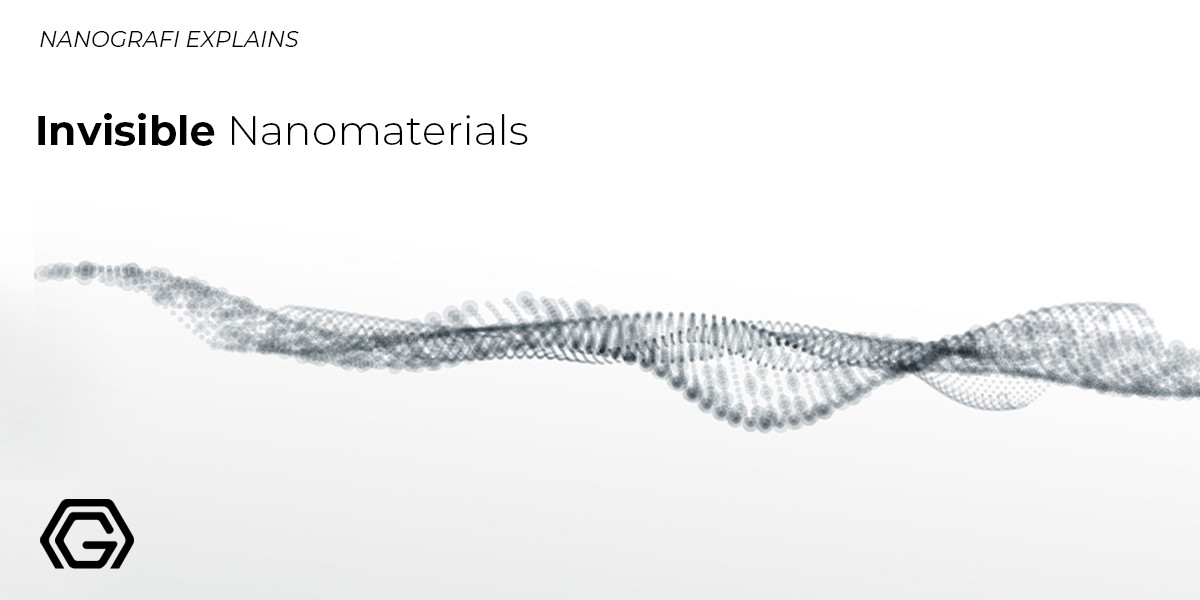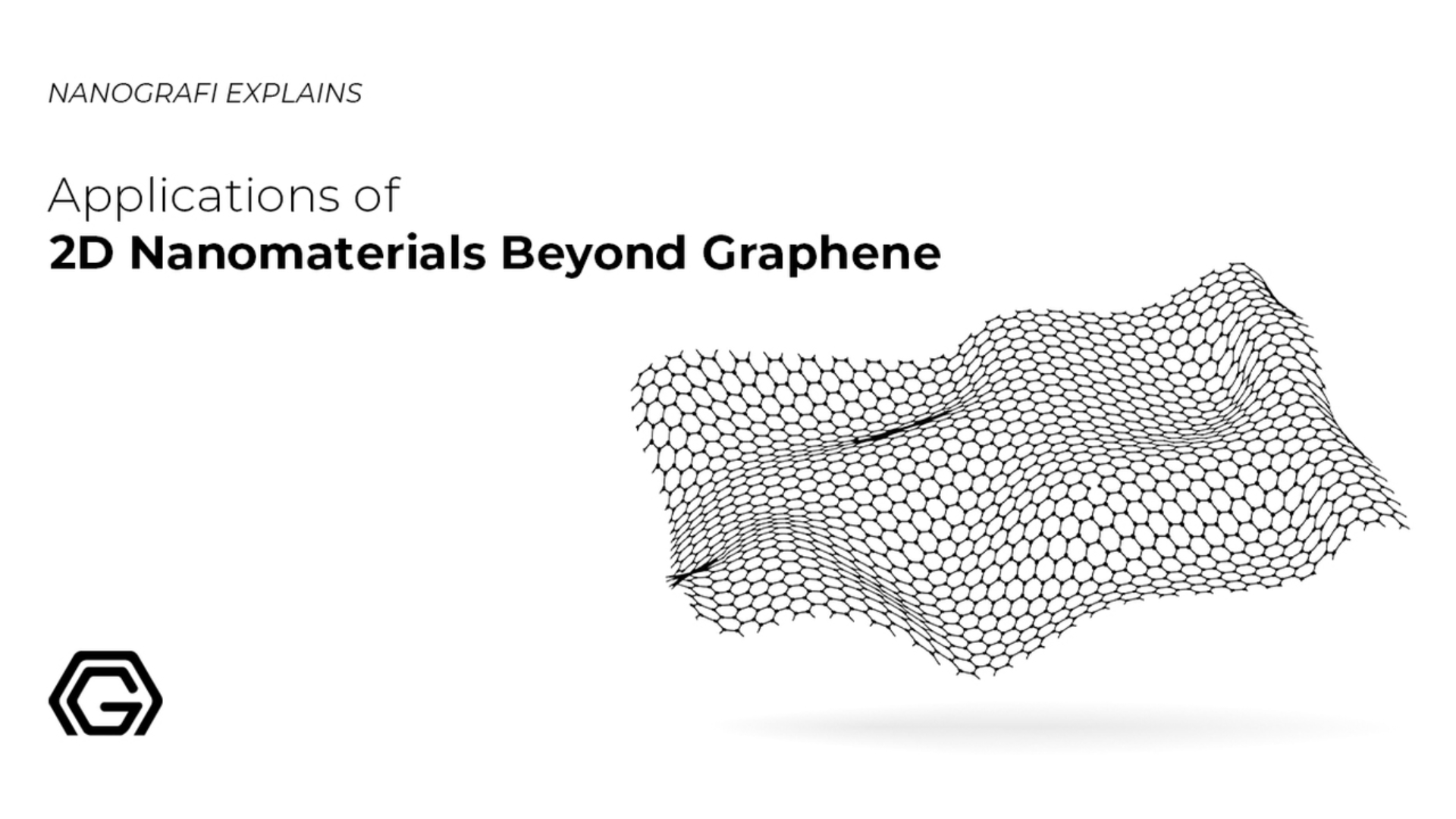Invisible Nanomaterials
An invisible nanomaterial is a new and upcoming concept in material sciences. Such materials have been theorized since the beginning of electromagnetic theory but have never been observed until recently. The foundation of invisible materials is based on anapole moments that result in radiation-less particles.
The application areas of invisible nanomaterials include nanolasers, metamaterials, cloaking applications, enhancement of nonlinear effects, and photonic absorption.
Introduction
Recently, the materials science community has started to talk about invisible nanomaterials. The secret to the invisibility of a nanomaterial is based on electromagnetic radiation. Electromagnetic radiation patterns are closely related to the electrical, magnetic, and optical visibility of a material. Therefore, the electromagnetic theory holds an important place in natural sciences and has been the center of various researches for centuries. It is understood that charged, excited, or accelerated particles radiate electromagnetic waves. Even though a substantial amount of research has focused on these electromagnetic radiations, scientists have always wondered if there was a possibility of non-radiating sources. In 1933, Schott first demonstrated the radiation-less properties of a rigid charged spherical shell moving along a periodic orbit. Further research followed Schott’s work leading to many discoveries including the multipoles. Cartesian electric and magnetic dipoles have become well-known moments featured in conventional dynamic charge–current distributions on the length scales much smaller than the effective wavelength of light. The third class of moments which is called toroidal moments was acknowledged later. Toroidal multipoles become non-negligible when the area of dynamic charge–current distribution is comparable to or larger than the effective wavelength of light. Toroidal multipoles are crucial because of their contribution to absorption, dispersion, and optical characteristics of matter. The acknowledgment of toroidal modes has led to a deeper understanding of many optical phenomena at the nanoscale including radiation-less particles. Toroidal dipole modes can lead to destructive interference effects and scattering cancellation with strong light confinement. This type of interference is seen between electric dipole and toroidal dipole modes. Since both electric dipole and toroidal dipole modes have identical radiation patterns, when co-excited and spatially overlapped they cancel the scattering of each other in the far-field region, and the scatterer appears to be invisible. The resulting radiation-less state was termed “anapole”. In Greek “ana” means “without” hence the term anapole means “without poles”. Along the lines of this logic, the suppression of light scattering leads to optical anapoles. The elementary particles exhibiting anapole modes are currently considered as the potential explanation of the dark matter. On the other side of the coin, nanomaterials with observed anapole modes include nanodisks, nano pixels, and nanopillars.
Applications of Invisible Nanomaterials
From the moment they have been discovered, invisible nanomaterials have dazzled scientists and spark so many application ideas. Even though the technologies using these nanomaterials are still not fully developed, they show great potential. Some prominent application areas of invisible nanomaterials include nanolasers, metamaterials, cloaking applications, enhancement of nonlinear effects, and photonic absorption.
Nanolasers in Subwavelength Photonics
Nanolasers have recently attracted a lot of attention due to their place in lab-on-chip technologies. Normally, nanolasers are based on dielectric photonic structures since these materials offer low resistance losses. However, these materials do not meet the required scales in lab-on-chip applications. On the other hand, invisible nanomaterials showing anapole modes are promising options for effective nanolasers. Anapole states do not dissipate energy in the far-field region and effectively accumulate energy inside the nanoparticles. These unique properties of invisible nanomaterials can increase the local state density and subsequently enhance the overall laser efficiency. Another advantage of utilizing anapole modes for the development of nanolasers is the ability to tune the optical properties of lab-on-chip technologies. A recently suggested anapole laser is based on InGaAs semiconductor nanodisk with the dimensions of 440 nm diameter and 100 nm height. This invisible nanomaterial shows a confined anapole mode produced by the interference of the dipole mode and toroidal mode. InGaAs nanodisk provides couples light into waveguide channels, with peak coupling intensity ten thousand larger than that for conventional nanolasers. Furthermore, this nanolaser allows generating ultrafast (of 100 fs) pulses via spontaneous mode locking of several anapole modes. Further research on anapole nanolasers can provide innovative approaches to non-radiative energy transfer because of unique near fields, coupling, and hybridization of anapoles compared to magnetic and electric dipoles. Having said that, nanolasers technologies based on invisible nanomaterials still require further development and engineering of critical properties.
Metamaterials Built from Invisible Nanomaterials
Metamaterials are one of the most attractive subjects in material sciences. Fundamentally, metamaterials are engineered materials showing unique properties that are not naturally found in those materials. Engineering nanomaterials to obtain metamaterials showing extraordinary optical properties have especially been at the center of studies. These photonic metamaterials built from invisible nanomaterials manipulate light at optical frequencies. For example, an anapole metamaterial operating at the IR range was designed based on plasmonic nanostructures. Studies show that at the anapole wavelength the reflection coefficient can be reduced down to 30% while the transmission coefficient is increased up to 14.5%. Developing metamaterials based on invisible nanomaterials contributes to the development of low-loss metamaterials and meta devices.
Enhancement of Nonlinear Effects
Nonlinearities are optical phenomena involving a nonlinear response to driving light field. Nonlinear effects are utilized in several different fields including semiconductors, sensors, and optical image processors. The cancellation of far-field radiation and concentration of energy in the Subwavelength volumes allow invisible nanomaterials to enhance nonlinear interactions at the nanoscale. For example, Ge nanodisks are utilized to enhance efficient frequency conversion. The third harmonic generation (THG) was increased four orders of magnitude compared to unstructured Ge film. Similar effects are observed in Si nanodisks and AlGaAs nanopillars surrounded by gold rings.
Cloaking Applications
One of the most exciting applications of invisible nanomaterials is the possibility of cloaking an object. The scattering of light from an object is mainly determined by its electrical dipole component. Thus, the anapole mode of invisible nanomaterials opens a path for cloaking applications. At the core-shell approach, the electric dipole response of an object can be compensated by the toroidal response of the shell creating a camouflage effect. Incorporating the cloaking effect with the metamaterial approach can lead to extraordinary results utilized in military or safety applications.
Photonic Absorption
Enhancing photonic absorption is a key element in photonic applications. Invisible nanomaterials such as nanodisks and core-shell particles can play a significant role in enhancing light absorption due to their anapole modes. Nanodisks and nano pixels can be utilized to enhance the absorption rate as well as the absorption bandwidth. For example, Ge nanodisks show absorption rates higher than 5 in a bandwidth of about 200 nm. On the other hand, heterostructures of two different nanodisks can provide bandwidths of about 800 nm. Enhanced photonic absorption with invisible nanomaterials can serve as functional units in semiconductor photodetectors.
To get more information about applications of nanomaterials,
you can read our blog post here.
Conclusion
Invisible nanomaterials are fairly new to the arena of material sciences. The idea of these materials goes way back in history but such materials have never been observed until recently. Studies have shown the invisibility effects of nanodisks, nanopillars, and nano pixels of several different materials. The invisibility is based on the unique behavior of electromagnetic radiations and multipolar modes. The three main families of multipolar modes are electric, magnetic, and toroidal modes. The interference between these modes allows nanoscale light manipulation. Toroidal modes are especially important for the understanding of invisible nanoparticles. Toroidal multipoles share identical radiation patterns with electric and magnetic multipoles. When toroidal and electric multipoles are co-excited and spatially overlapped they cancel the scattering of each other in the far-field region, and the scatterer appears to be invisible. Such interference is also known as anapole, the star phenomena of invisible nanomaterials. An anapole moment vanishes when probed by real photons, and thus can be tested only in processes involving virtual photons. The unique optical properties of invisible nanomaterials are utilized in several different applications including nanolasers, metamaterials, cloaking applications, enhancement of nonlinear effects, and photonic absorption. It is important to note that, these technologies still require further development. However, they hold great potential for novel technological improvements.
To get more information, you can visit Blografi.
References
1.Baryshnikova, K. V., Smirnova, D. A., Luk'yanchuk, B. S., & Kivshar, Y. S. (2019). Optical anapoles: concepts and applications. Advanced Optical Materials, 7(14), 1801350.
2.Miroshnichenko, A. (2016, September). Observation of anapole with dielectric nanoparticles. In 2016 10th International Congress on Advanced Electromagnetic Materials in Microwaves and Optics (METAMATERIALS) (pp. 229-231). IEEE.
3.Talebi, N., Guo, S., & van Aken, P. A. (2018). Theory and applications of toroidal moments in electrodynamics: their emergence, characteristics, and technological relevance. Nanophotonics, 7(1), 93-110.
4.Liao, B., Zebarjadi, M., Esfarjani, K., & Chen, G. (2012). Cloaking core-shell nanoparticles from conducting electrons in solids. Physical review letters, 109(12), 126806.
5.Miroshnichenko, A. E., Evlyukhin, A. B., Yu, Y. F., Bakker, R. M., Chipouline, A., Kuznetsov, A. I., ... & Kivshar, Y. S. (2015). Nonradiating anapole modes in dielectric nanoparticles. Nature communications, 6(1), 1-8.
Recent Posts
-
Turning Noise into Power: Energy Harvesting with Piezoelectric Nanogenerators
Ambient acoustic energy, once an untapped resource, is now being converted into sustainable electric …5th Mar 2025 -
Holey Super Graphene in Li-ion Batteries: Next Generation of Energy Storage
Holey Super Graphene (hG), also referred to as “holey graphene,” is redefining li-ion ba …7th Feb 2025 -
Future Communication with 5G Technology and Advanced Materials
5G technology opens the doors to a new era in communication with faster connection speeds, low laten …6th Feb 2025






